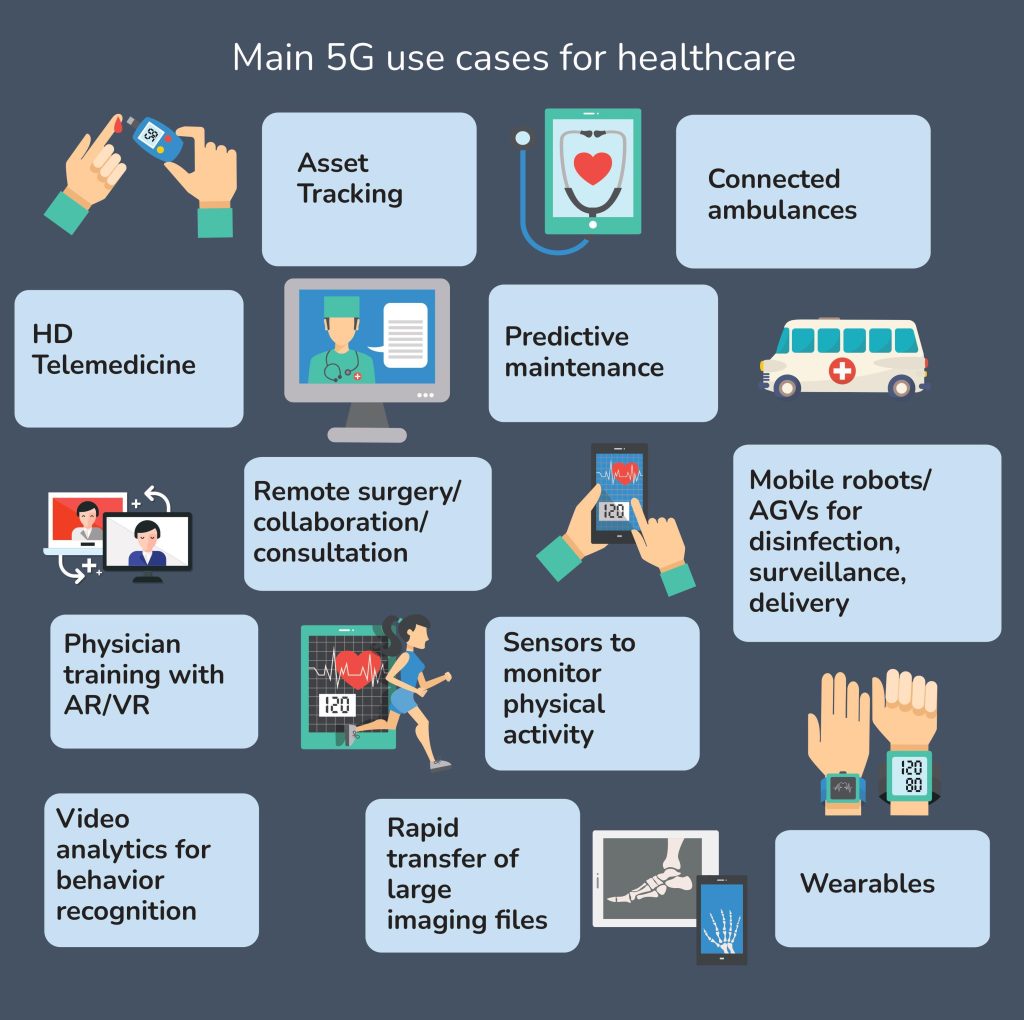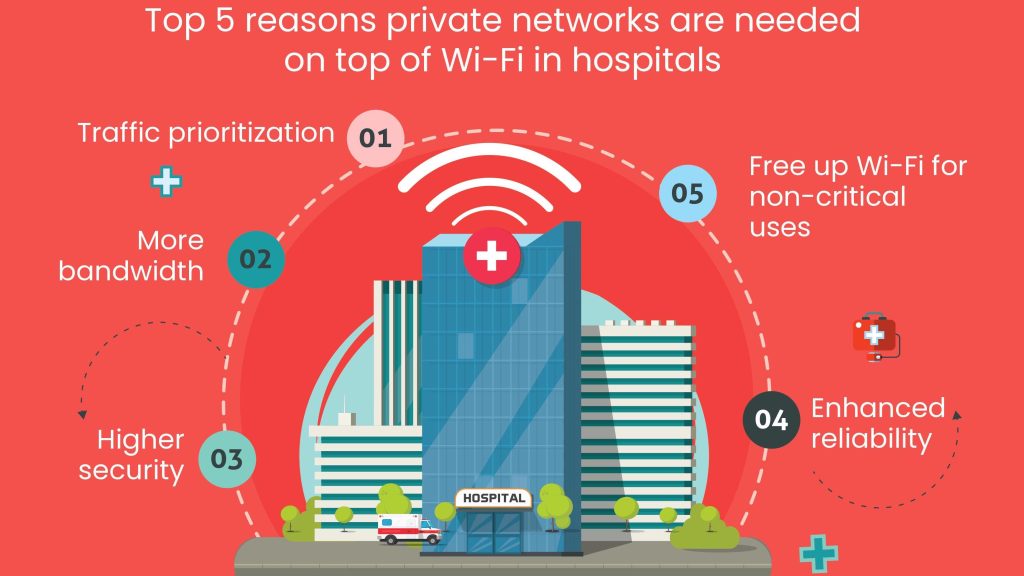
The healthcare industry is moving ahead quickly with 5G usage and the deployment of private networks. Medical facilities, practitioners, and staff have discovered the many advantages of secure, high-speed networks that make their jobs more efficient and their patients’ visits more manageable.
Why Put in a Private Network When You Already Have Wi-Fi?
Medical facilities have found that Wi-Fi alone does not meet their telecommunication needs. Wi-Fi can get congested when many users are on it, slowing traffic down. It doesn’t prioritize medical necessity over entertainment. It doesn’t have the high security needed to transmit confidential medical records. Healthcare professionals are discovering that private cellular networks can help with all these things and more.
Private LTE and 5G networks provide significantly more bandwidth than Wi-Fi, and traffic can be prioritized, such as allowing medical records to be transferred at the expense of a slowed Netflix video. Private networks also provide higher security than Wi-Fi, with only authorized users and appliances given access. Hospitals have also found that private LTE networks free up Wi-Fi for patients and non-critical needs and provide seamless mobility between indoors and outdoors to support a fully connected campus and emergency response system.




How Will Healthcare Use a Private LTE and 5G Network?
There are many uses that the healthcare industry has found for high-speed internet, such as connected ambulances, which allow a patient’s readings to be available to a hospital in real-time, and mobile robots, which can deliver medicine and disinfect rooms. Remote patient monitoring and wearables, such as Fitbit, allow doctors to have up-to-date medical information and be alerted if problems arise. The rapid transfer of medical files, such as MRIs, CAT scans, or X-Rays, can significantly impact medical treatment when received promptly. Video analytics could be helpful in psychiatric institutions to monitor dangerous behavior. Telehealth visits have become a staple of medical care since the COVID-19 pandemic struck, with 91% of those using it open to doing so again. Telehealth visits are also good for the environment, with one 383-day period estimating savings of over 1.6 million gallons of gas not being used in drives to the doctor.
Perhaps the top use case that healthcare facilities will use with private wireless networks is the Internet of Things (IoT) or asset tracking. The IoT will be used to monitor equipment, patients, and personnel. Portable medical equipment occasionally gets used in a patient’s room, then is not able to be found an hour later when needed elsewhere. IoT will solve that problem. Healthcare is ranked third on the list of which verticals will deploy IoT, after utilities and manufacturing.
Healthcare will also see the rise of physician training using AR/VR, remote collaborative surgery, and in the future, remote surgery.
Are Medical Centers Using Private Networks Already?
There are many private LTE and 5G networks already in place at healthcare facilities around the world, including:
- A 5G network has been set up in a private psychiatric hospital in Leipzig, Germany, Helios Park-Klinikum, initially to connect and track equipment.
- The Ellison Institute for Transformative Medicine of USC in Los Angeles has installed a mmWave 5G network to collect additional data for cancer patients and determine better methods to transfer large files around the facility.
- The Rush University Medical Center installed a CBRS 3.5 GHz band network for outdoor triage tents to handle COVID-19 patients in Chicago.
Conclusion
The growth of 5G and private cellular networks in healthcare will rise dramatically. One forecast has the 5G healthcare market size growing at a 74% CAGR between now and 2028, reaching $4.2 billion. Another report states that 5G will allow 35 million more emergencies to be responded to and allow a billion extra patients to be treated each year by 2030. Most telling, healthcare using 5G applications is expected to add $530 billion by 2030 to the global GDP. Like many other industries, healthcare will see dramatic cost savings and efficiency improvements over the next few years.
Inside Telecom provides you with an extensive list of content covering all aspects of the tech industry. Keep an eye on our Insights sections to stay informed and up-to-date with our daily articles.